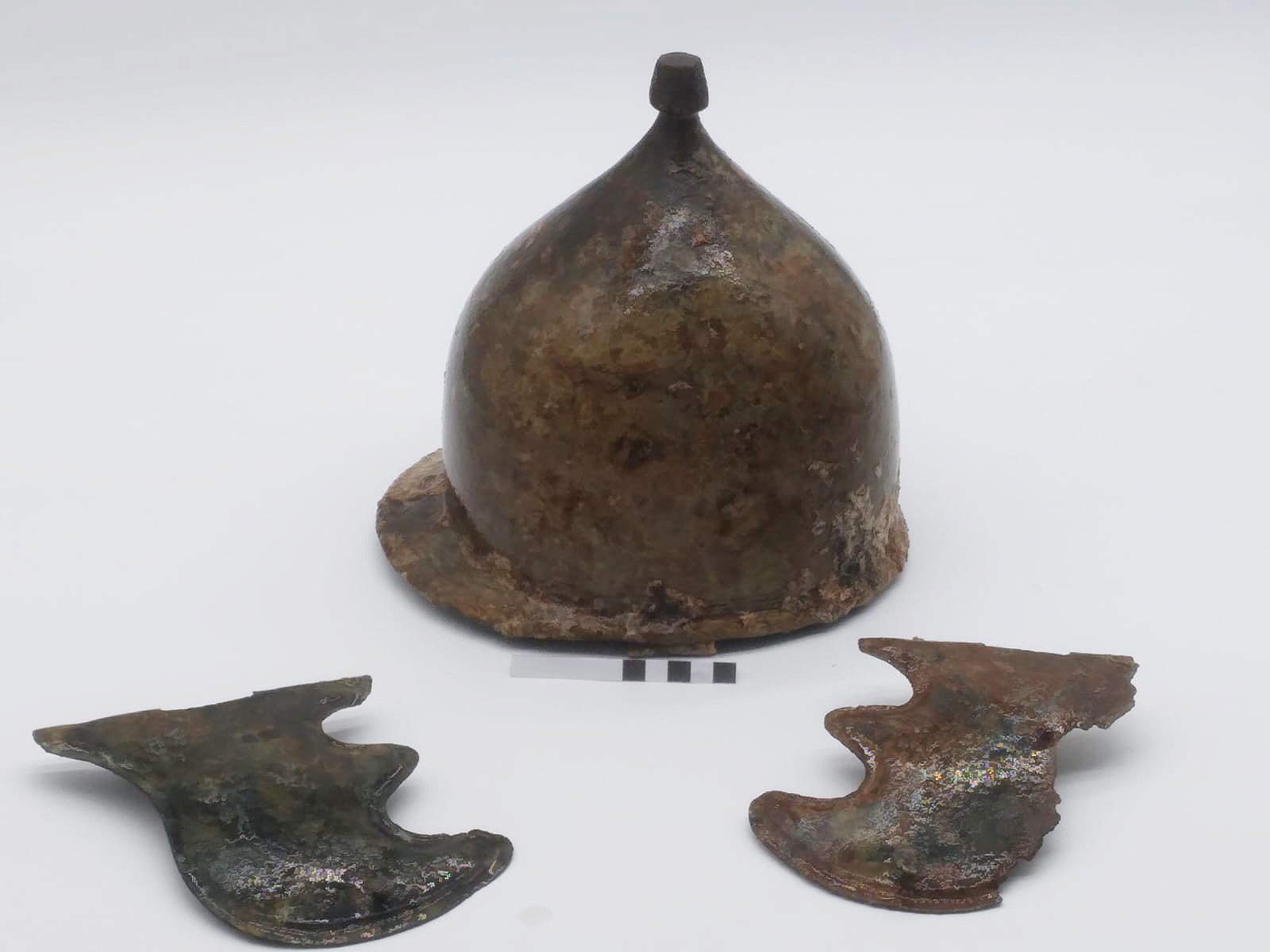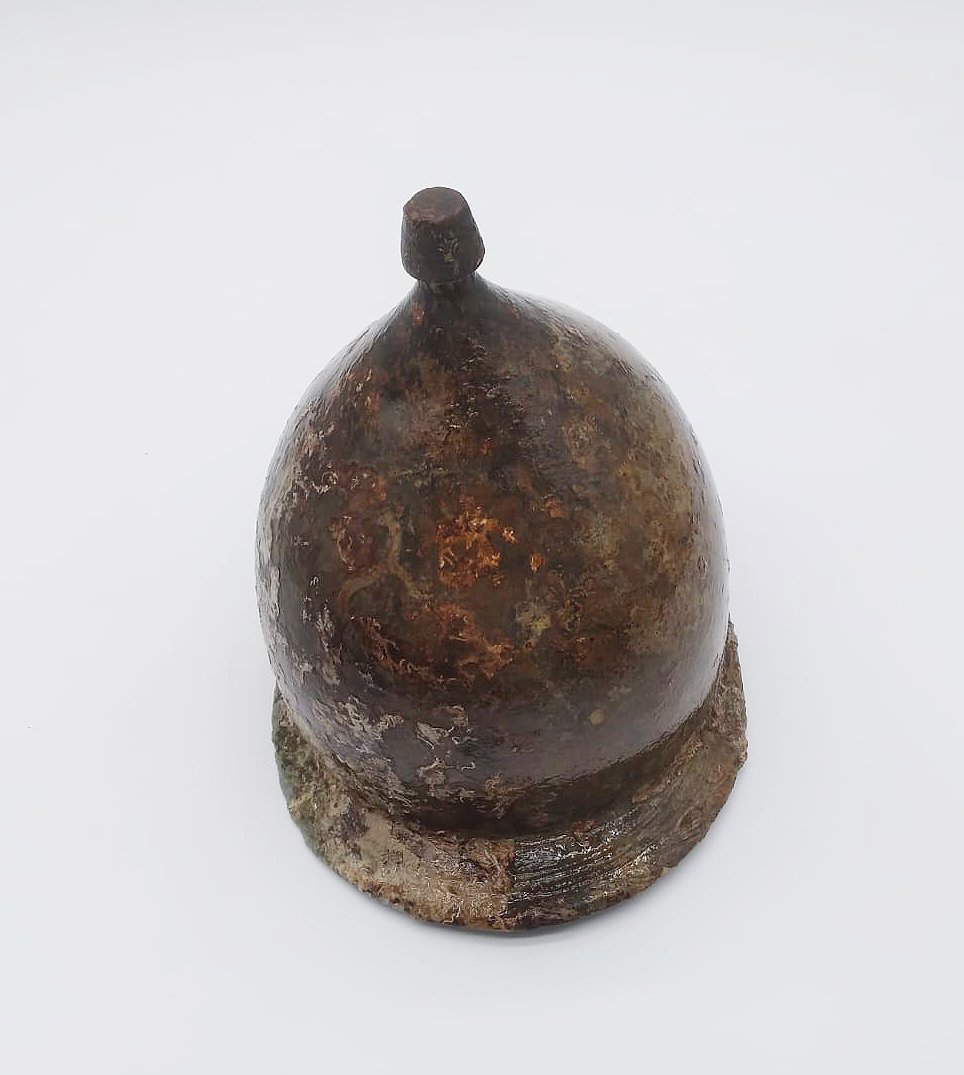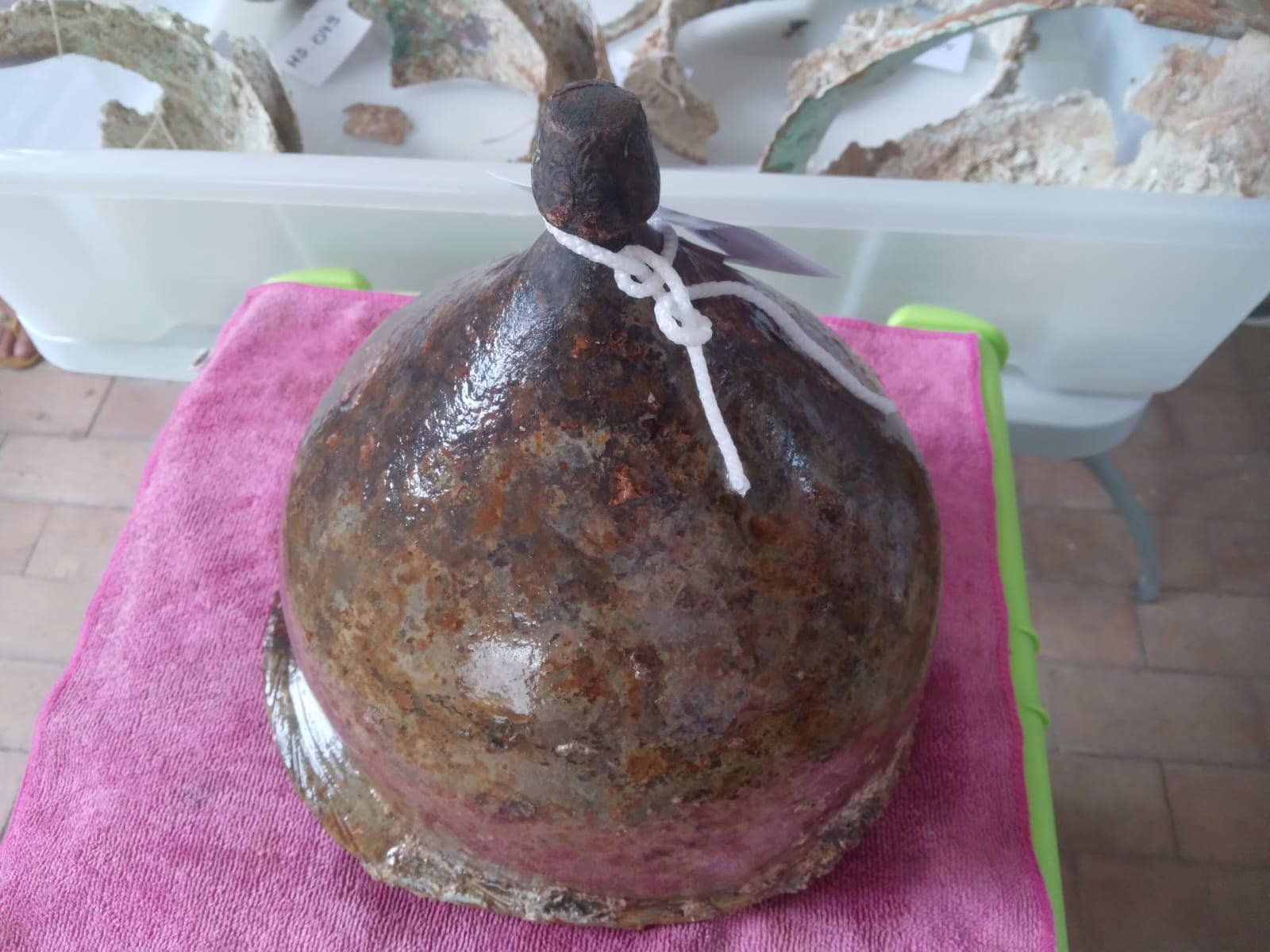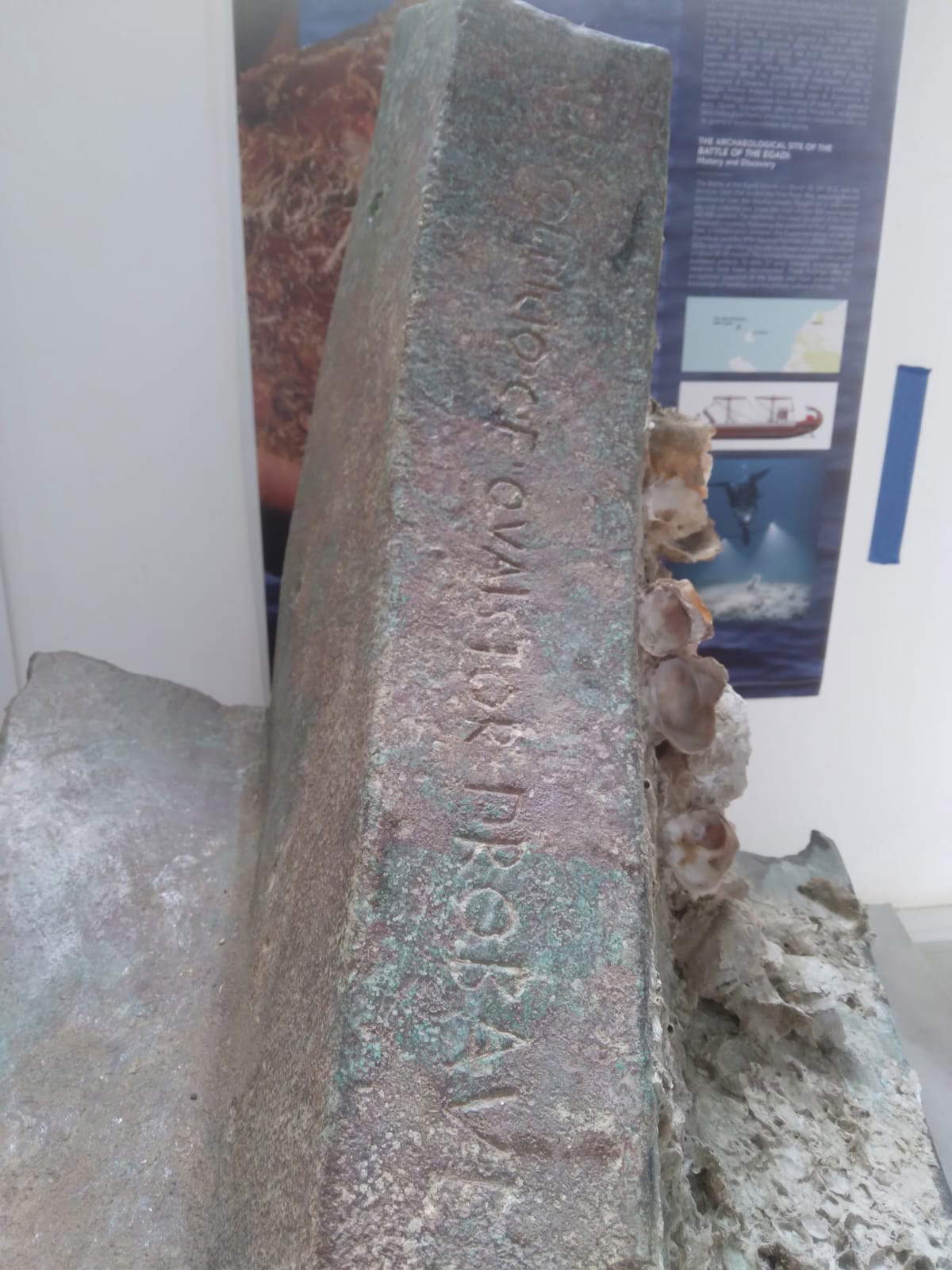A recovery that sheds new light on one of the most significant episodes in ancient Mediterranean history. In the waters of the Egadi Islands, last August (but the news was not released until this morning), a bronze helmet of the “Montefortino” type, in an extraordinary state of preservation and complete with paraguances, was brought to the surface. It was identified and lifted from the seabed by high-water divers from the Society for the Documentation of Submerged Sites (Sdss), led by Mario Arena, under the supervision of the Superintendence of the Sea, with the support of the Marine Protected Area, the Municipality of Favignana and the Harbor Master’s Office.
The artifact comes from a sea area charged with memory: that in which, in 241 B.C., the Battle of the Egadi was fought, the decisive clash of the First Punic War between Rome and Carthage. The helmet, of the type used by Roman troops between the fourth and first centuries B.C., represents one of the most important finds in recent years, both for the integrity of the find and for the historical context to which it refers.
“The Montefortino helmet is one of the most beautiful and complete ever recovered,” comments the councilor for Cultural Heritage and Sicilian Identity, Francesco Paolo Scarpinato. “These findings not only enrich the historical knowledge of the 241 B.C. battle, but also strengthen the image of our island as the custodian of a unique cultural heritage. This is an extraordinary achievement, the result of the joint work of the Superintendence of the Sea, the professionals involved in the research and the support of international institutions and foundations. We will continue to invest in the protection and enhancement of this heritage, aware that it represents a fundamental identity and cultural resource for Sicily.”



The recovery of the helmet is part of a larger research activity, which over the years has led to the discovery of numerous artifacts related as much to the Battle of the Egadi as to other eras. During the same campaign, a large bronze handle from the so-called “wreck of the fish bank,” dated to the fifth century AD, was also brought to the surface. The precise function of the object remains uncertain, but its workmanship and size make it a piece of great interest to scholars. All the recovered artifacts underwent initial conservation treatment thanks to the intervention of Sdss restorers. The operations were also made possible thanks to the contribution of U.S. patron Michel Garcia, who supported the protection and conservation activities.
In parallel, research made use of the most advanced diagnostic techniques. At the radiological studio of Dr. Giuseppe Perricone, in Trapani, computed tomography (CT) scans were performed on about thirty metal artifacts recovered in previous years and still heavily encrusted. The investigations made it possible to identify within the concretions swords, spears and javelins, weapons that were used in the 241 B.C. clash and that for more than two thousand years remained hidden by the sea.
The combination of scientific investigations and underwater recoveries confirms the central role of the Superintendence of the Sea in coordinating activities that combine diverse professionalism, from archaeological research to conservation to radiological diagnostics. The work of the Sdss, with the support of local institutions, has made it possible to enrich a heritage that, already today, constitutes a unicum in the panorama of Mediterranean research.
A decisive role in this activity was also played by the Rpm Nautical Foundation, a private U.S. foundation that for years has supported the Superintendence of the Sea with its own resources and technological means. Using an oceanographic ship and advanced survey instruments, the foundation has helped map and document the Egadi seabed, identifying wrecks and areas of archaeological interest.
The Battle of the Aegades, fought on March 10, 241 B.C., represented the conclusion of the First Punic War. The clash saw the Roman fleet, led by Gaius Lutazio Catulo, prevail over the Carthaginian fleet commanded by Annon, decreeing Rome’s victory and the beginning of its supremacy over the western Mediterranean. Underwater finds of helmets, weapons and naval rostrums have in recent decades returned concrete evidence of that momentous event, enriching the historical narrative with material evidence.
The new Montefortino helmet adds to this series of discoveries, standing out for its extraordinary state of preservation. The still intact presence of the paraguances makes it an extremely rare find, capable of offering scholars valuable data on the type of equipment used by Roman soldiers and the manufacturing techniques of the period. Its integrity also makes it possible to hypothesize future museum exhibitions, which could allow the general public to admire up close an object that has spanned twenty-four centuries of history.
The recovery of the bronze handle from the Late Antique wreck and the radiological identification of the weapons testify to how the Egadi area is not only linked to the battle of 241 B.C., but represents a true layered archive of historical and commercial events. Maritime traffic, naval clashes and the daily life of the vessels are echoed in these findings, which will return, thanks to future studies, additional pieces of knowledge.
Finally, rostrum number 25 already recovered in a previous campaign was cleaned: it is Roman and has the inscription “Ser.Solpicius C.F. Quaestor Probavi(t),” probably: “Servius Sulpicius, quaestor, son of Gaius, approved,” implied the rostrum. The Gaius, whose son the named quaestor was, could hypothetically be Gaius Sulpicius, consul from 243 B.C. and thus at the height of the First Punic War.

 |
| Sicily, a helmet from the 241 BC Battle of the Egadi recovered at sea. |
Warning: the translation into English of the original Italian article was created using automatic tools. We undertake to review all articles, but we do not guarantee the total absence of inaccuracies in the translation due to the program. You can find the original by clicking on the ITA button. If you find any mistake,please contact us.